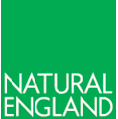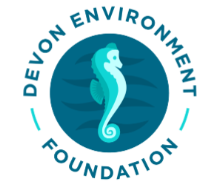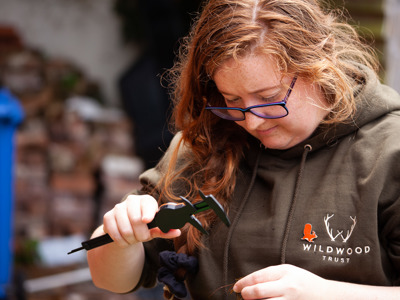
The project
Saving Devon’s Native Crayfish Project
The white-clawed crayfish (WCC) is the UK’s only indigenous freshwater crayfish and has seen a decline of over 70% in the South West in the last 50 years.
The WCC is now recognized as globally Endangered (IUCN) and is protected under the Wildlife and Countryside Act 1981.
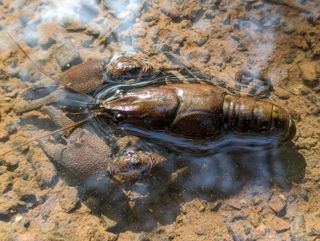
The sharp decline in the species has been driven by habitat degradation, pollution, deteriorating river water quality, but primarily the introduction of the invasive, non-native American signal crayfish and its associated pathogens. Signal crayfish not only carry a deadly crayfish virus which kills WCC, but they also prey and outcompete WCC for food.
WCC are a smaller, less aggressive species which produce fewer young. Signal crayfish produce greater numbers of young and mature faster. Unlike our native crayfish species, signal crayfish burrow extensively into riverbanks and predate coarse fish and eggs. This means that there is also a risk of soil erosion, flooding and deterioration of ecosystem health if they are present.
The conservation of white-clawed crayfish (WCC) is important for several ecological and environmental reasons:
Keystone Species
WCC are native to Europe and are the only native crayfish species found in the UK and Ireland. They play a crucial role in maintaining
biodiversity by occupying a specific niche in freshwater ecosystems. They are an important part of the food chain for otters, fish and birds, and their disappearance could disrupt the balance of aquatic ecosystems.
Indicator Species
WCC are considered an indicator species, meaning their presence or absence can indicate the overall health of a freshwater habitat.
Their sensitivity to environmental changes, pollution, and habitat degradation makes them valuable indicators for assessing the well-being of rivers and streams.
Invasive Species Threat
The introduction of non-native crayfish species, such as the signal crayfish, poses a significant threat to the WCC. The invasive species outcompete native crayfish for resources and can carry a devastating
crayfish plague.
Legal Protection
WCC are a protected species in the UK due to their declining populations. In conservation terms, the white-clawed crayfish is on a
par with tigers and rhinos - a globally Endangered species battling for survival.
Adult WCC can grow up to 12 centimeters (invasive signal crayfish
can grow much larger up to 20cm).
WCC are primarily found in clean, fastflowing rivers and streams. They
prefer well-oxygenated water with plenty of hiding places among rocks and vegetation.
The WCC life cycle includes an egg stage, a juvenile stage, and adulthood. They shed or ‘moult’ their exoskeleton as they grow.
Females can lay up to 100 eggs (signal crayfish can lay up to 300!) and mate in autumn (when daylight and temperature are reduce). Females carrying eggs are called ‘berried’ as the clutch of eggs held underneath the tail look like berries.
Once hatched in spring, the juvenile crayfish stay attached to the female for 2-3 weeks. At this stage they feed off their yolk sacs. When they leave the female, they start to forage on very small food items such as plankton.
Adults only start to breed when they are 3-4 years old, and the females only lay one set of eggs each year.
WCC are long-lived invertebrates – they can live 7+ years!
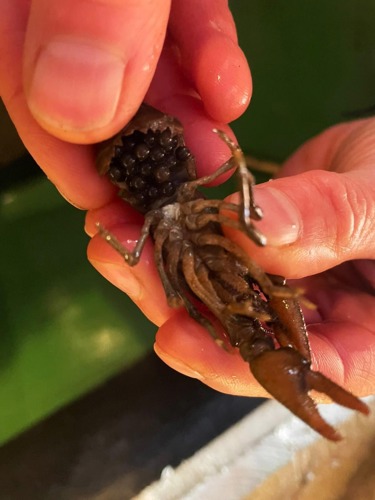
A 'berried' female WCC with eggs and spermatophores
Devon has only two remaining fragile wild populations of WCC, both of which are under threat of extinction from expansion of American signal crayfish and declining water quality.
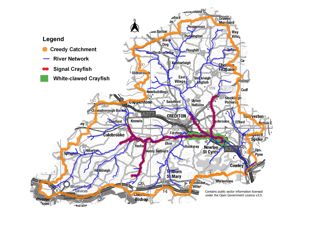
Creedy Yeo
Surveys during the summers of 2021 and 2022 established that a population of WCC survives along a 5km stretch of the Creedy Yeo river between Crediton and Newton St Cyres.
Native crayfish were previously found over a much wider length of the river but now only around 10% of the original population survives.
River Culm.
Signal crayfish have expanded downstream and WCC have disappeared from areas where the signals have moved into.
2022/23 surveys found that the WCC population is now mixed with signal crayfish.
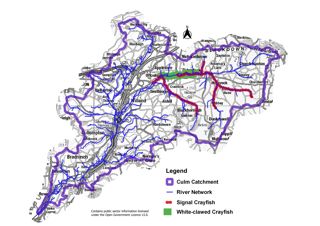
River Culm
WCC were believed to have died out on the Culm in the 1980s but were rediscovered in 2006.
Extensive surveys in 2018/2019 established that a WCC population survived along a 4km stretch of river between Hemyock and Uffculme.
Surveys also found that signal crayfish populations are present above and below the native crayfish in the main river and its tributaries.
The WCC is slowly disappearing at the upstream edge of its range in
response to the downstream expansion of signal crayfish.
The Culm population is not yet fully mixed with signal crayfish–stretch of the river near Culmstock remains free of the invasive signal crayfish.
At present there is no way of eradicating the invasive American signal crayfish or effectively reducing their numbers in our rivers, without causing unacceptable environmental damage to other aquatic species.
Conservation methods are focused on ensuring whiteclawed crayfish populations do not become extinct by establishing a Devon crayfish hatchery and subsequent breeding populations in ‘ark sites’ ahead of potential future river re-introductions.
Addressing deteriorating water quality in our rivers is an equally important aspect but sadly there are no quick solutions due to the scale and complexity of the land management and wastewater issues involved.
What’s happening in Devon to safeguard our native crayfish?
The good news is that a range of organisations including the Blackdown Hills National Landscape, Bristol Zoological Society, South West Crayfish Partnership, South West Water, Wildwood Trust and Wild Planet Trust have been working over the last number of years to ensure WCC do not become extinct in Devon.
Crayfish conservation
Culm Community Crayfish project (2018-19)
Devon ark site project (2019-2022)
Creedy Catchment Crayfish Conservation Project (2022-2023)
Saving Devon’s Native Crayfish (2023-present) – this Natural
England funded project is establishing a crayfish hatchery at
Wildwood Devon and will create a new crayfish ark site in
2024.
Water quality improvements
Through the work of the Creedy Catchment project a steering
group has been established to ensure water quality issues are
addressed in the Creedy catchment.
Through the Connecting the Culm project, the Blackdown Hills National Landscape is leading work to ensure water quality improvements are delivered in the Culm catchment.
These water quality initiatives are supported by organisations
including the Environment Agency, Catchment Sensitive
Farming, South West Water, Mid-Devon District Council, Forestry
England and West Country Rivers Trust.
Without intervention it is predicted that WCC may become extinct in Devon within the next decade.
Once established, the WCC hatchery will be used to create breeding populations within existing Devon ark sites and within a newly constructed ark site delivered through this grant scheme. These populations will then be used for future translocations and reinforcements into other suitable ark sites and other waterbodies where these are identified through follow on projects.
The Saving Devon’s Native Crayfish (SDNC) project is delivering a strategic programme of breeding and rehoming these ‘at-risk’ populations of white-clawed crayfish to new safe sites in Devon, and is a priority action identified by the South West Crayfish Partnership(*) and a priority action identified through the Creedy Catchment Crayfish Conservation project action plan. There are wider regional crayfish strategies which link into an overarching national crayfish strategy. The SDNC project is an excellent example of landscape scale strategic conservation with an active national steering group.
The Saving Devon’s Native Crayfish project is managed by the Wildwood Trust (Devon) and is funded through Natural England’s Species Recovery Programme. The project is also supported by South West Water and by a Devon Community Foundation grant.
*SWCP is a collaboration between Bristol Zoological Society, Cefas, the Environment Agency, Wildlife Trusts, Buglife, the Invertebrate Trust, water companies and independent practitioners.
The most effective approach for WCC conservation is the creation of ‘ark sites’. An ark site is a pond, lake, river or stream where WCC can be safely rehomed away from the threat of the American signal crayfish, and/or poor water quality and habitat degradation.
Over the last few years, projects have attempted to establish ark sites using existing wild waterbodies with mixed success. Existing ponds or streams are often not a feasible long-term solution due to the presence of predatory species or poor water quality.
Saving Devon’s Native Crayfish project is trialling a new approach by constructing a bespoke ark site at Wildwood Devon designed specifically for WCC where we can be certain no predatory or invasive species are present.
The finished pond will have a gravel bottom with rock piles and other underwater habitat where crayfish can hide away and breed. Newly planted trees and shrubs around the edge will provide shade to keep the water cool, and marginal and aquatic plants will help keep the water oxygenated. A solar powered aeration system will also ensure good water quality. Part of the pond will be over 2 metres deep so that the water temperature stays cool and stable during the warmer months of the year.
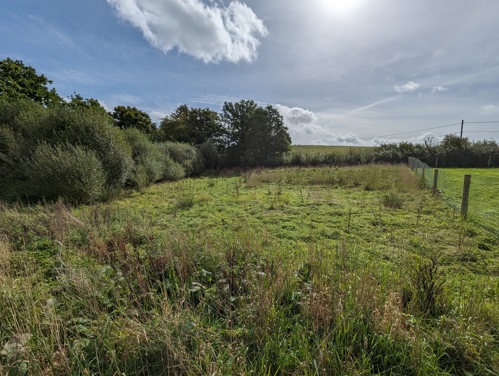
Following construction and landscaping (summer 2024), it is anticipated that WCC will be introduced to the pond from the Wildwood Trust Devon hatchery after approximately 6 months. The crayfish will then mature and breed in the pond and a percentage will be translocated to other ark sites or river reintroductions in the following years under licence from Natural England and the Environment Agency.
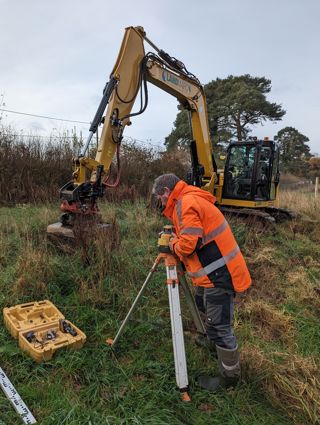
Checking site levels and soil type ahead of the ark site pond construction
The Saving Devon’s Native Crayfish project is managed by the Wildwood Trust (Devon) and is funded through Natural England’s Species Recovery Programme. The project is also supported by South West Water and by a Devon Community Foundation grant.
